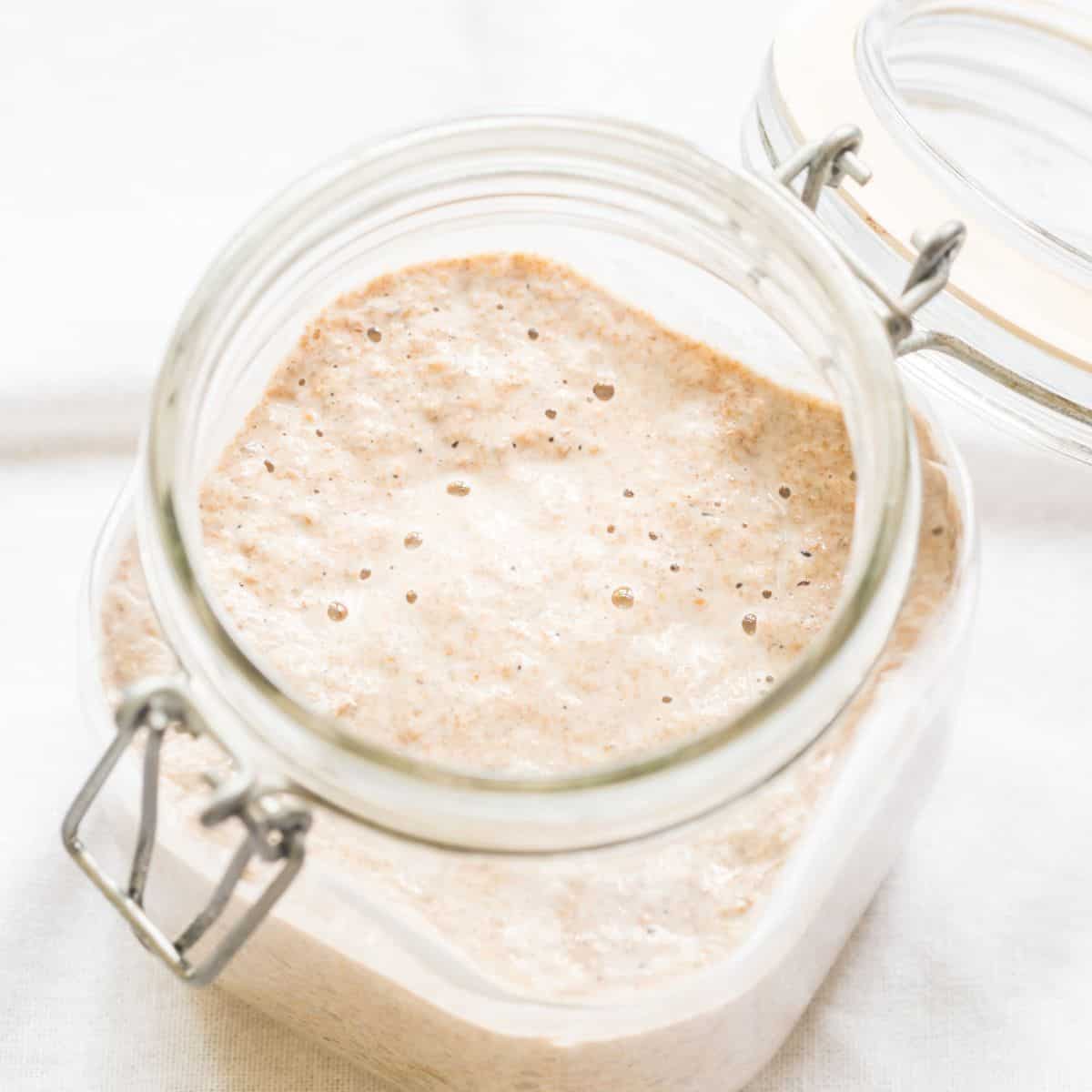How To Easily Convert Any Recipe To Sourdough
Learn how to easily convert any recipe to sourdough. Use this simple step-by-step guide to convert all of your favorite recipes into a gut-healthy, easy-to-digest sourdough option.
After reading this post, you’ll be ready to try some amazing sourdough recipe conversions. Here’s one for a really delicious Sourdough Pumpkin Banana Muffins.
Once you have figured out how to convert all of your favorite treats and meals using sourdough, it’s hard to go back. For me and my family, I will always choose the healthier option and my kids don’t even know the difference.
That’s a Mom win in my book.

Some of these links are affiliate links. You can read my full disclosure HERE.
Sourdough doesn’t have to be difficult. I know it doesn’t have the best reputation of being easy. From getting a starter going to all the scheduled feedings, it can seem burdonsome. But I promise you, it isn’t nearly as difficult as some make it seem.
For me, it’s the opposite. Sourdough is super simple and makes meal preparation and planning less of a hassle. Plus there’s the added benefit of knowing it’s a healthier option.
I always have an active, ready-to-use sourdough starter on the countertop.
Converting a recipe to sourdough is actually pretty simple. At the end of this post, I will have a FREE printable conversion card that you can keep close by for reference.
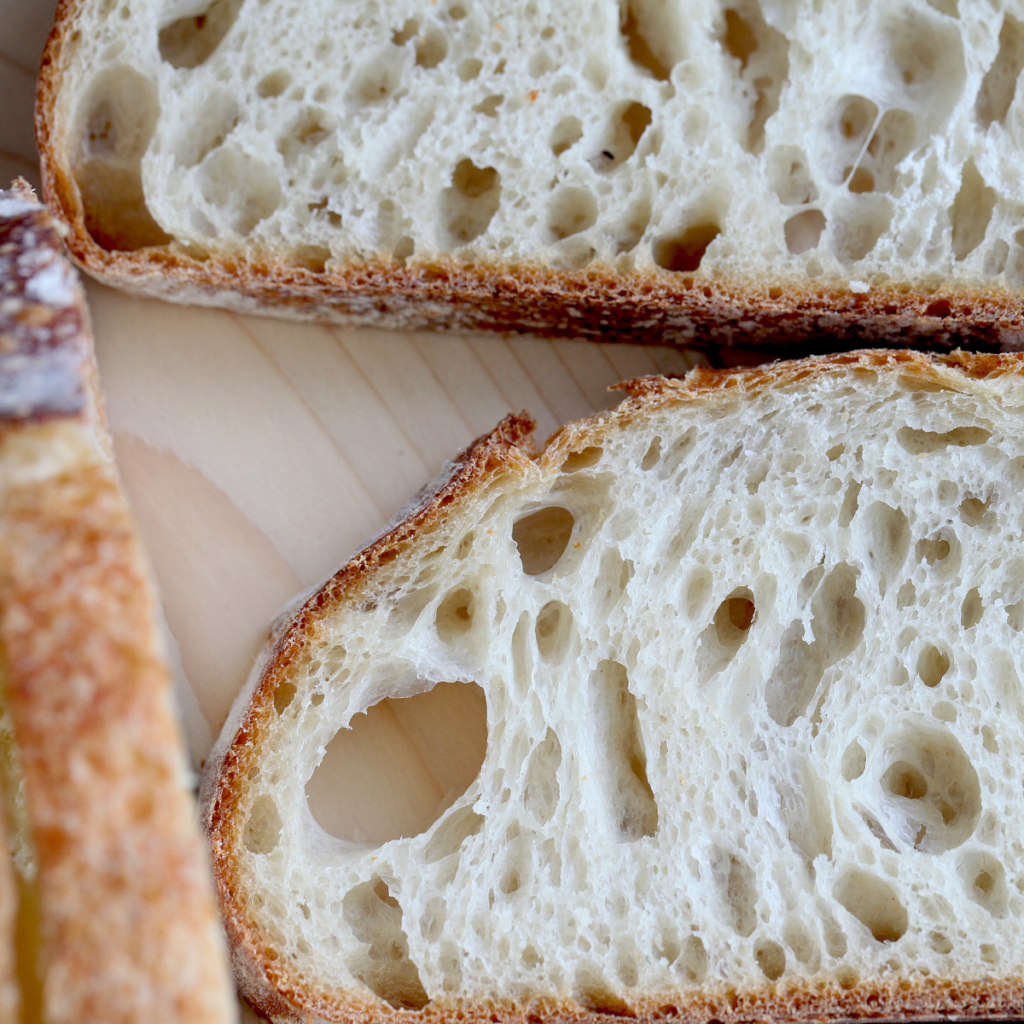
What are the health benefits of sourdough?
- The number one benefit of using sourdough in your recipes is that it is easier on digestion. In fact, many people with gluten intolerance find that they can still eat sourdough since it has been fermented and therefore broken down. This isn’t the case for everyone of course, so use caution or talk to your healthcare provider.
- Sourdough has a lower glycemic index then most other breads. This just means that it won’t cause your blood sugar levels to spike after you have eaten it.
- Fermented breads and recipes are better for people that have a gluten sensativity. The longer prepartion time for sourdough means that much of the gluten protein is broken down into amino acids before you eat it.
- It provides a “healthy” bacteria. It is fermented in a way that enhances the beneficial bacteria in bread and thus in your body when you consume it.
- Sourdough bread made with whole wheat flour, wild yeast, and bacterial comes from a very natural and organic state. It is the oldest form of leavened bread.
- Sourdough contains far less preservatives. It has acetic acid which naturally prevents the growth of mold. It preserves itself naturally! How cool is that?! Simply put, it doesnt require the addition of toxic preservatives and chemicals to make it last.
- It is far more nutrious then store bought breads. Sourdough contains a large variety of vitamins and nutrients that are super beneficial for your day to day health. It contains manganese, iron, B1-B6, calcium, B-12, folate, zinc, potassium, thiamin, niacin, riboflavin, magnesium, phosphorus, selenium and vitamin E, to name a few.
Factors to consider when converting a recipe to sourdough
There are a few things to consider when converting a recipe to sourdough.
- Consider the type of recipe youd like to convert.
- How much liquid and flour does the recipe use?
- Is there another leavener that is added to the recipe? A leavening agent is a substance that causes the expansion of doughs and batters by the release of gases. This includes baking soda and baking powder.
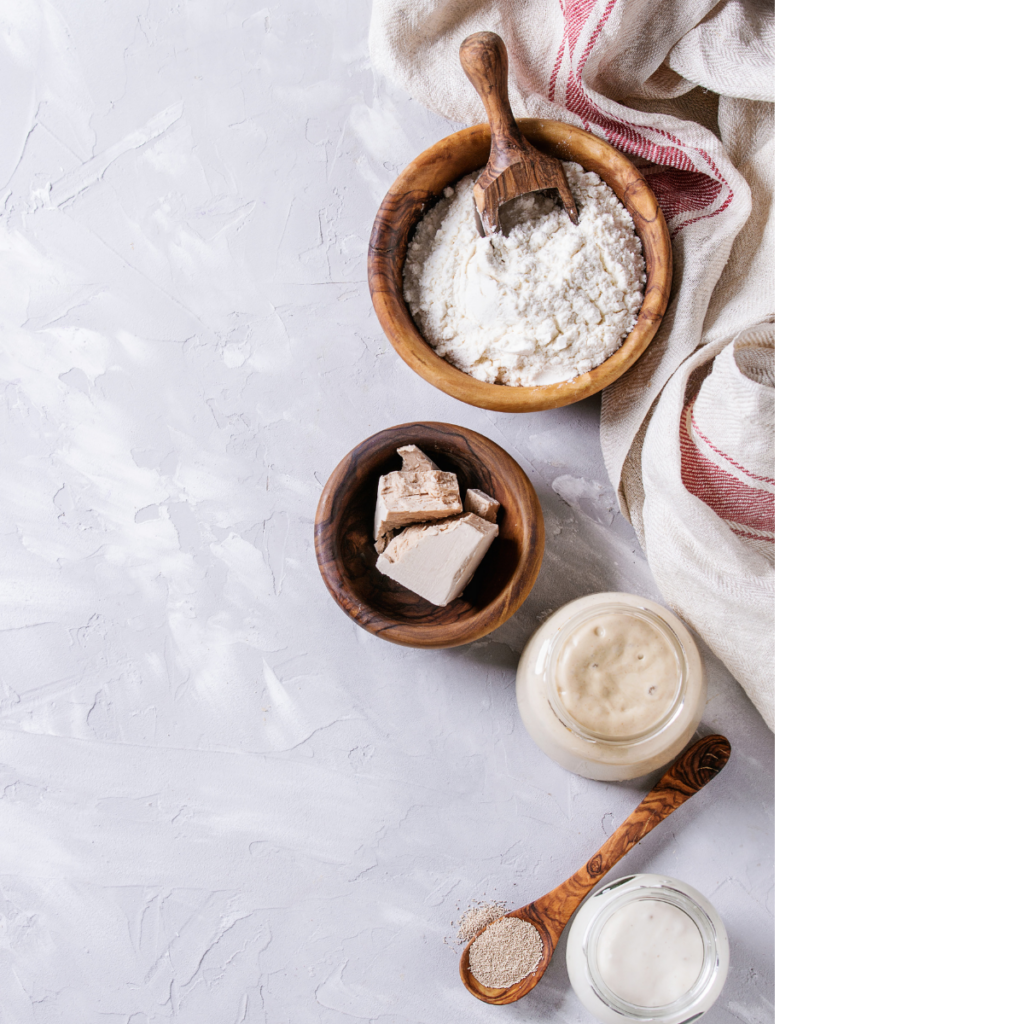
Why would you want convert a recipe to sourdough?
- Health is the number one reason you may want to convert a recipe to sourdough. Fermented grains reduce the amount of phytic acid present in the grain which allows the beneficial nutrients (listed above) to be more bio-available to the body during digestion. This just means that they are more easily absorbed.
- Sourdough adds a complex and delicious flavor to everything. Once you’ve mastered converting recipes to sourdough, regular bakes don’t have the same pizazz they once did.
Directions for converting any recipe to sourdough
- Swap one packet of conventional store bought yeast for 1 cup of sourdough starter.
- Reduce the liquid in the recipe by 1 cup.
- Likewise, rediuce the flour in the recipe by 1 cup.
- Rise time required for a recipe will likely double. Something to consider when planning ahead for meals.
Adjustments to recipes are solely based on the hydration of your sourdough starter.
The conversion description above is based on a sourdough starter that has been fed at 100% hydration. This just means that when you created and maintained your sourdough starter, that you used a ratio of 1:1 (1 cup of flour to 1 cup of filtered water).
This does affect recipe outcome and needs for converting a recipe if you have maintained your starter differently.
The amount of flour and water used is based on the amount of starter I have on hand currently. Regardless, the RATIO of flour to water never changes.
For instance, if I only have a small amount of starter that needs to be fed for a recipe, I may feed my starter with 1/2 cup of flour and 1/2 cup of filtered water instead of a full cup of each.
FAQ Converting Recipes to Sourdough
How long should I let my sourdough recipes rise?
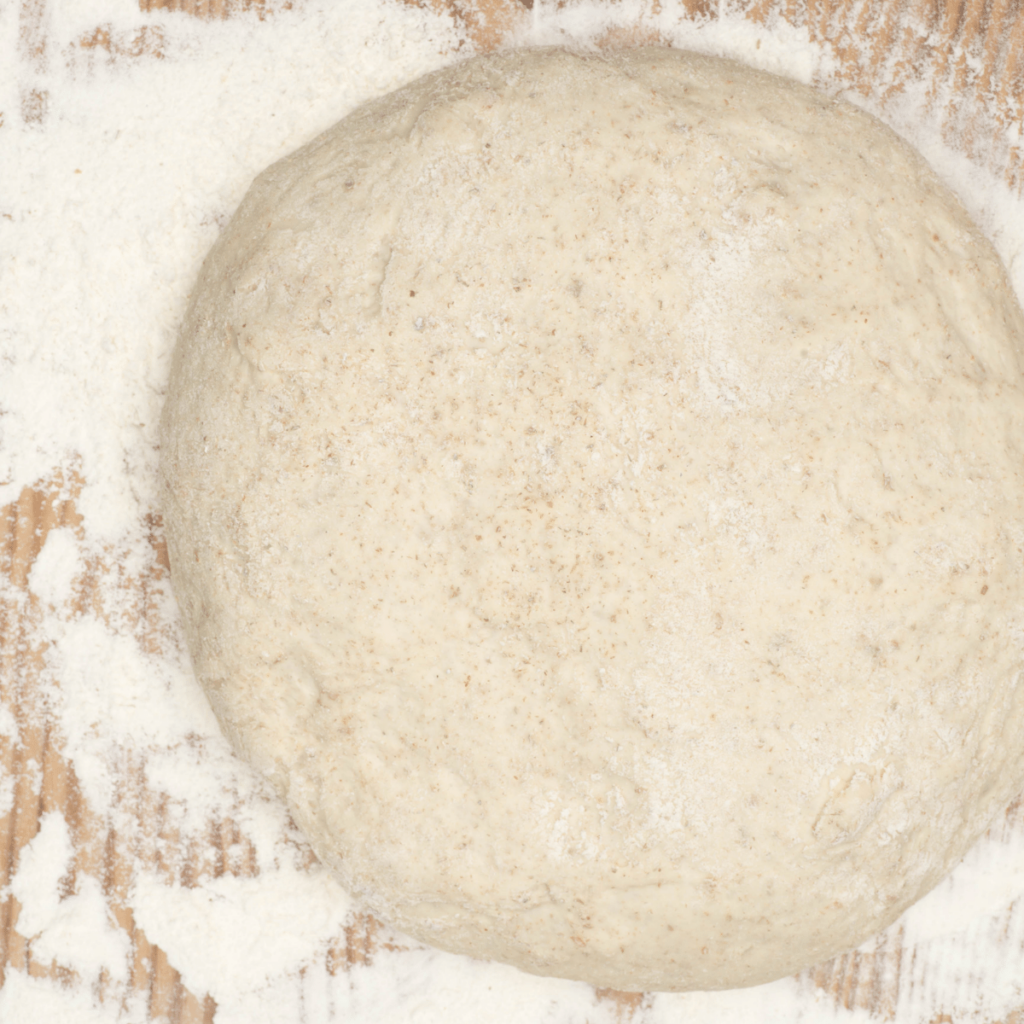
For most sourdough recipes, it will take almost double the amount of rising time. This of course is just a rough estimate and not an exact measurement. But I have found that double the time is fairly accurate.
Natural yeasts and bacteria take more time to fully develop than store-bought yeast.
While a yeast-based bread may take 1-2 hours to rise, a sourdough bread will likely take 4 hours (to be safe).
If you are making bread, make sure that both rise times are doubled. The bulk rise (first rise) as well as the second rise (after shaping).
Differences in rising time will change depending on the type of recipe if it contains other leavening agents (baking soda or baking powder) and the temperature of the environment for the rise.
Can you do longer rises with sourdough?
The short answer to this is YES.
You can do longer rises overnight in the refrigerator to help develop the flavor without fermenting.
For most bread recipes, you would do a bulk ferment after you start the dough, then do a second ferment in the refrigerator covered with cling wrap or a beeswax wrap for up to an additional 24 hours.
Convert non-yeast recipes to sourdough
Yes. There are so many quick-bread recipes that work well for sourdough.
Pancakes, waffles, dutch baby pancakes, muffins, and sweet bread recipes like banana bread, pumpkin bread, and lemon loaf are a few of my favorites.
The basics for these types of recipes are the same as mentioned above.
- Add sourdough starter to recipe.
- Reduce the amount of flour indicated in the recipe by 1 cup.
- Reduce the amount of water or liquid by 1 cup.
Considerations when Converting a Recipe to Sourdough
It’s also important to mention that the type of sourdough starter you have will make converting a recipe different as well.
For instance, if you have an einkorn sourdough starter, or a gluten-free sourdough starter, the requirements and conversion will be drastically different. The flours used to create these starters are different than the traditional all-purpose flour or wheat flour that is typically used.
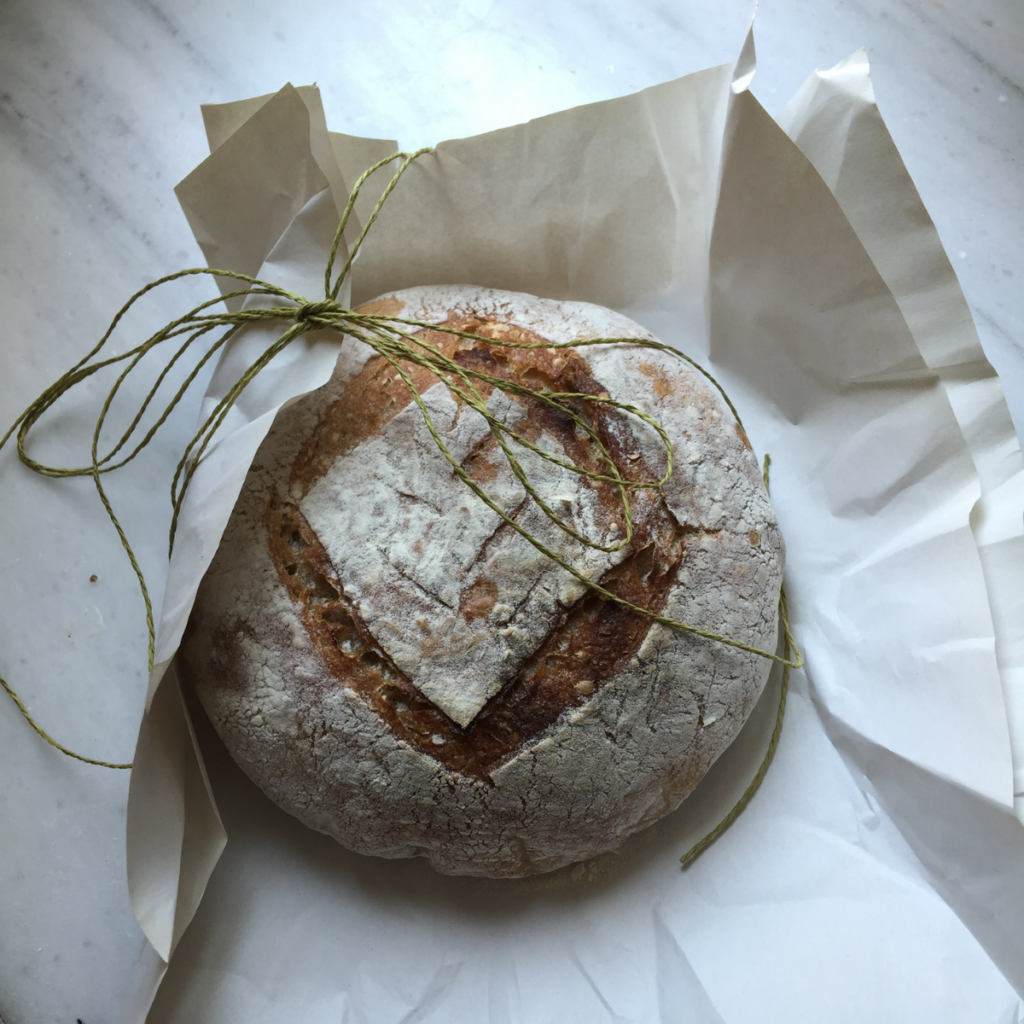
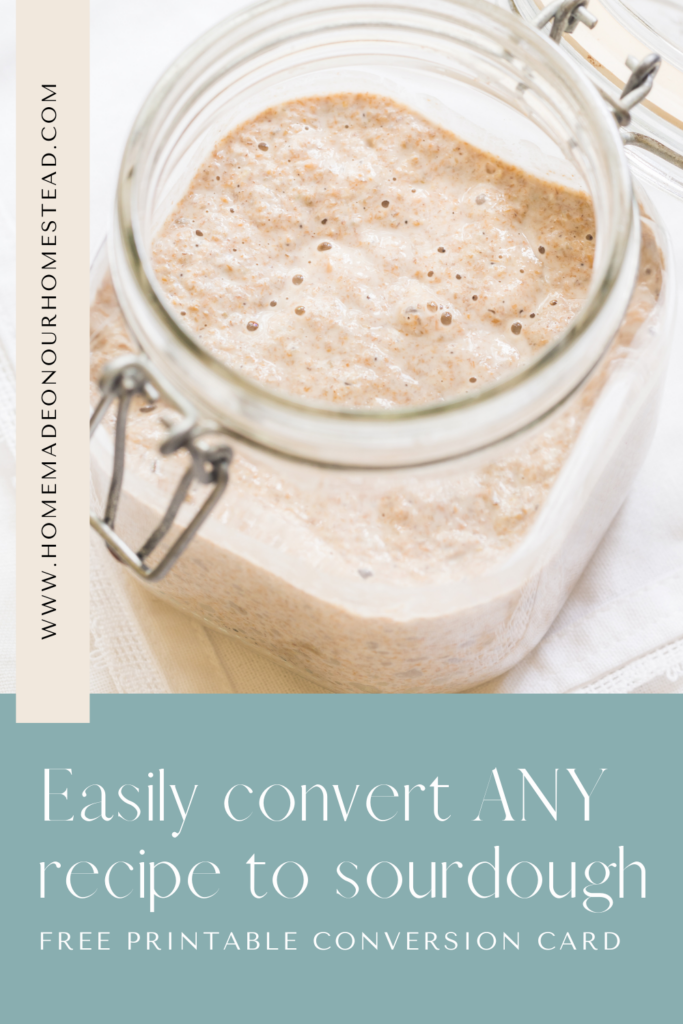
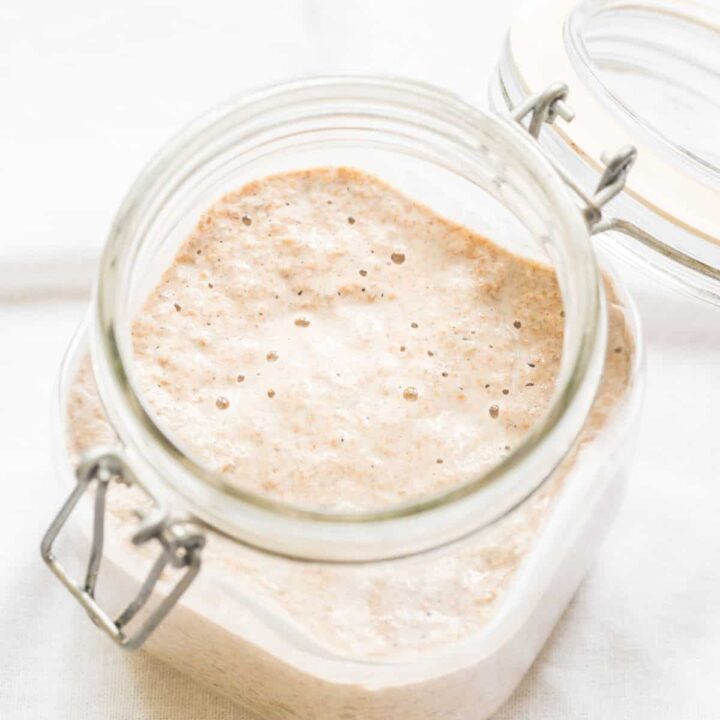
How To Easily Convert Any Recipe To Sourdough
This is a basic conversion of a recipe to sourdough.
This is for a 100% hydrated and fed sourdough starter using a 1:1 ratio of flour to filtered water.
Ingredients
- Ingredients will vary depending upon the recipe you are converting.
Instructions
THE BASICS OF CONVERTING A RECIPE TO SOURDOUGH:
1. Use 1 cup of fed sourdough starter in place of 1 packet of a conventional yeast packet.
2. Reduce the liquid in the recipe by 1 cup.
3. Reduce the flour used in the recipe by 1 cup.
4. Increase the rise time suggested for the recipe by DOUBLE. This will be for the bulk rise and the second rise.
*if there is no rise time required for the recipe you are converting, continue the preparation and baking as ususal*
Notes
The type of conversion will vary depending on the type of sourdough starter you are maintaining.
This conversion is for a 100% hydrated starter fed with regular flour and filtered water at a 1:1 ratio (1 cup flour to 1 cup filtered water).
Conversion will need to be altered if using a gluten-free starter or einkorn flour starter.
Delicious recipes from our homestead kitchen
I hope you enjoyed learning how you can convert your recipes into sourdough. Enjoy!


